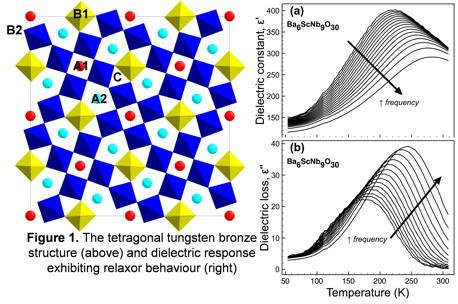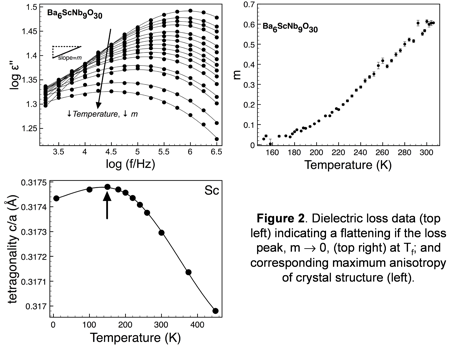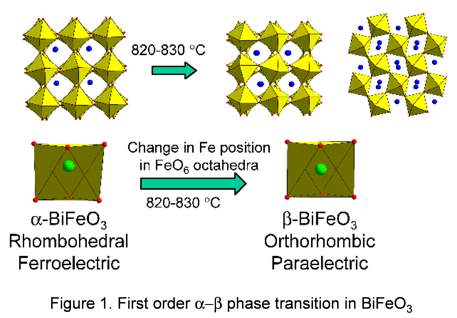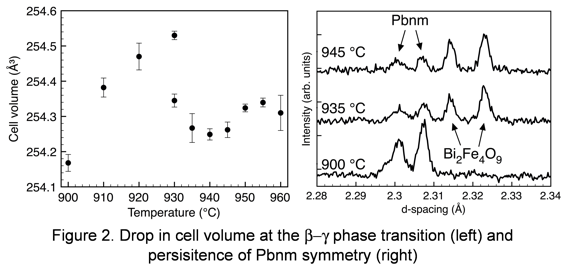Research


Research in the Morrison group focusses on solid state chemistry of functional materials (piezo-, pyro- and ferroelectrics) for electronic applications and encompasses both development of new materials and understanding of the role of intrinsic (composition, structure) and extrinsic (interfaces, processing) factors on the performance of materials.
Recent Highlights:
Relaxor behaviour in tetragonal tungsten bronzes
The tetragonal tungsten bronze (TTB) structure, A2A4B2B8O30, is closely related to the perovskite structure and offers a similar degree of compositional flexibility, however the presence of crystallographically non-equivalent A- and B-sites provides an extra degree of freedom for manipulation of the structure, figure 1. Although ferroelectric TTBs (including Ba2NaNb5O15 and (Ba,Sr)Nb2O6) were widely studied in the 1960’s-70’s our understanding of manipulation of this structure-type is poor compared to perovskites.
Our work is currently investigating a novel family of relaxor TTB materials based on A6MNb9O30 (where A = Ba2+, Sr2+, Ca2+ and M3+ = Ga3+, Sc3+, In3+ and Y3+) with a view to understanding composition-structure-property inter-relations. We have shown that the crystal anisotropy is key in determining the polar order temperature (J. Mater. Chem. 2009).


High temperature phases of multiferroic BiFeO3
Multiferroics represent an important technological class of materials which simultaneously exhibit magnetic and ferroelectric ordering; of particular interest is BiFeO3 (BFO) which exhibits both room temperature antiferromagnetic ordering (TN ~ 350-370 °C) and ferroelectric ordering (TC ~ 810-830 °C). Whilst many authors have investigated the crystal structure of BFO the structural phase transitions are still not well known. Two high temperature phase transitions have been reported, namely α-BFO (ferroelectric) – β-BFO (paraelectric) at approximately 820 °C and a β-BFO to γ-BFO phase transition at approximately 930 °C. Whilst it is widely accepted that the α-phase crystallises in the rhombohedral R3c space group various symmetries including orthorhombic, rhombohedral and monoclinic symmetries have been reported for the β-phase. Using high temperature powder neutron diffraction (PND) we unambiguously showed the β-phase is orthorhombic with a space group Pbnm (Phys. Rev Lett 2009). We also showed the evolution of the paraelectric β-phase through time-resolved PND studies and demonstrate the phase transition occurs as a first order transition with co-existence of both the rhombohedral α- and the orthorhombic β-phases at temperatures between 820 °C and 830 °C, figure 1.

Dielectric spectroscopy and variable temperature powder neutron diffraction data was used to investigate the correlation between the TTB structure and relaxor behaviour. We showed that the real part of dielectric permittivity follows the Volger-Fulcher model and that the dipole freezing temperature, Tf, increases with increasing ionic radii of the M3+ species. We also demonstrated that fitting of the dielectric loss to Jonscher’s universal law of dielectric relaxation yields comparable Tf values. Furthermore, variable temperature powder neutron diffraction data indicates a strong anisotropy in the crystal lattice at Tf which is associated with stiffening of the dipoles along the c-axis of the unit cell, figure 2. Thus the degree of structural distortion arising as a result of increasing ionic radii of the M3+ species can be directly correlated to the magnitude of the dipole (Phys. Rev. B 2011).

The γ-phase has been investigated to a lesser extent primarily due to the instability of BFO at high temperatures although some authors have postulated that this phase is cubic in nature. This latter phase transition (i.e β-γ) is also reportedly coupled with an insulator-metal transition. PND demonstrated that while a small volume contraction is observed at the β-γ transition temperature, figure 2, consistent with an insulator-metal transition, both the β- and γ-phase of BiFeO3 exhibit orthorhombic symmetry i.e. no further increase of symmetry occurs under the present experimental conditions, contrary to previous suggestions. Furthermore we observed the γ-orthorhombic phase to persist up to a temperature of approximately 950 °C before complete decomposition into Bi2Fe4O9 (and liquid Bi2O3), which subsequently begins to decompose at approximately 960 °C. Specifically we demonstrated that no symmetry change is observed at the insulator-metal transition with both the β-BFO and γ-BFO phases exhibiting orthorhombic symmetry (Adv. Func. Mater. 2010) similar in nature to the metal-insulator transitions observed in perovskite nickelates.

